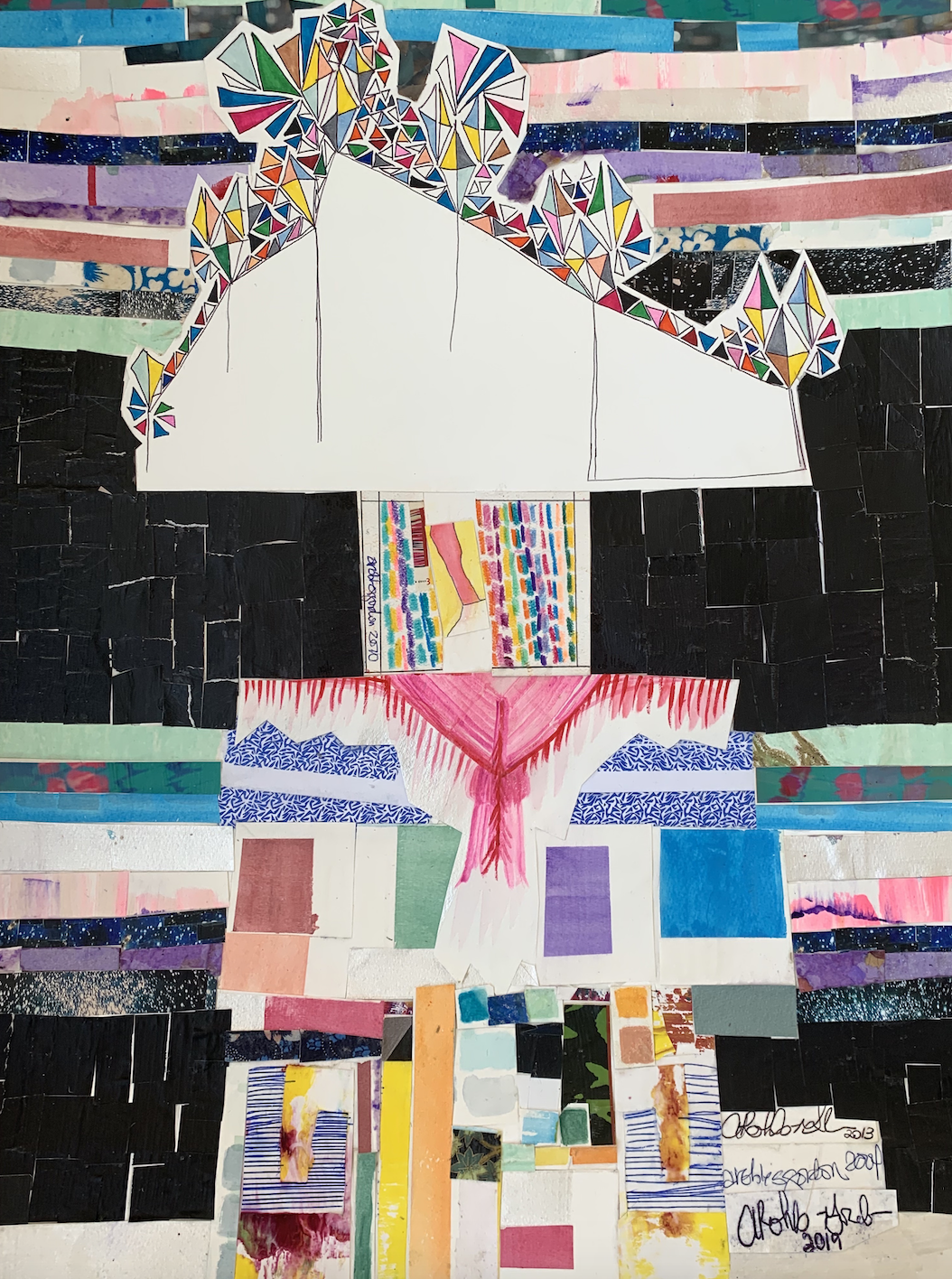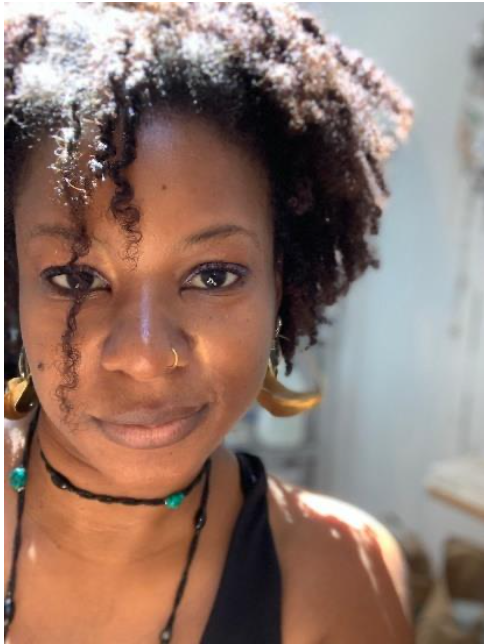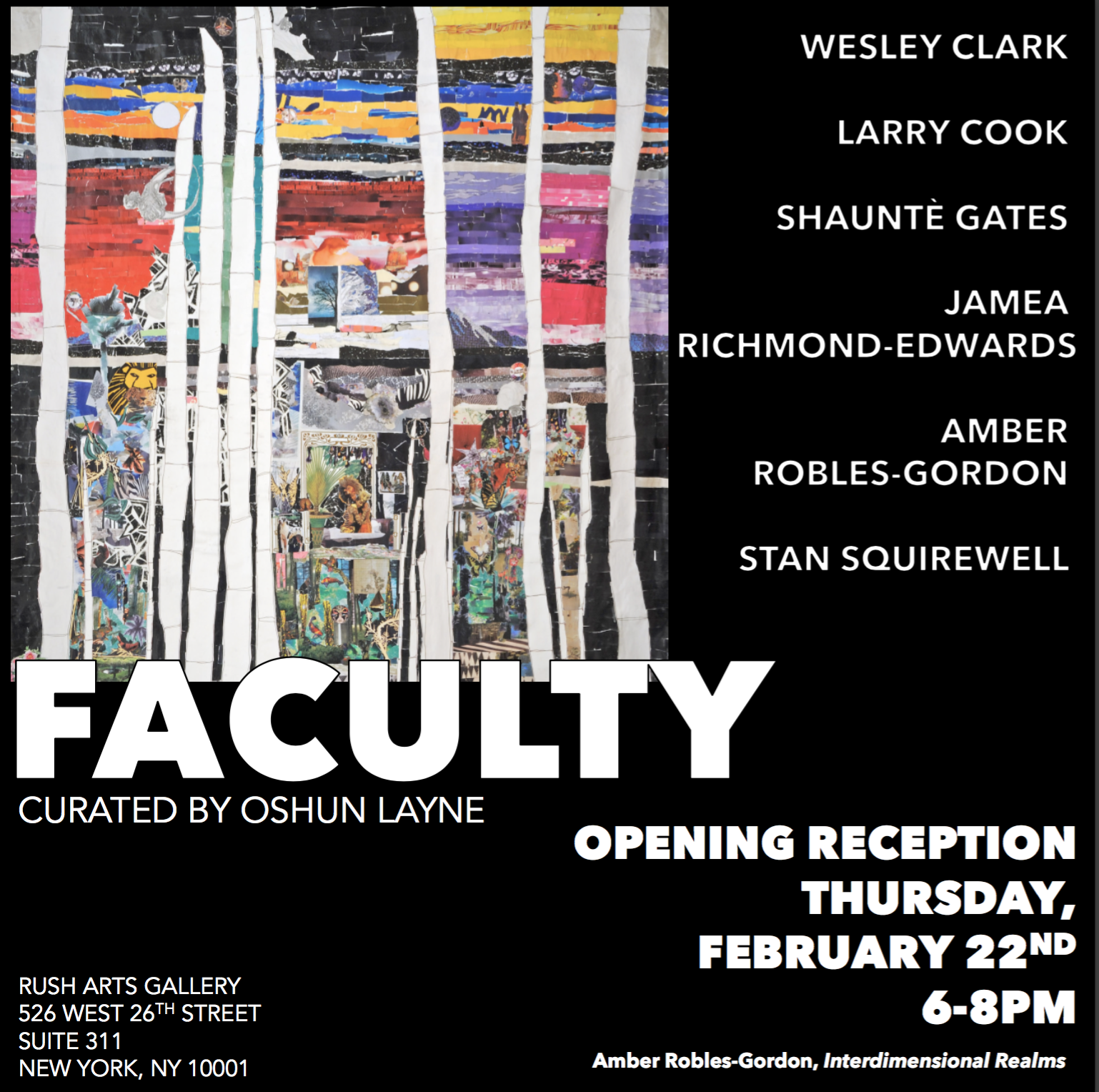Amber Robles-Gordon, MFA, is a mixed media visual artist, of Puerto Rican and West Indian heritage. Known for recontextualizing non-traditional materials, her assemblages, large sculptures, installations, and public artwork emphasize the essentialness of spirituality and temporality within life. Driven by the need to construct her own finite path, innovate and challenge social norms, her artwork is unconventional and non- formulaic. Ultimately her creations are representational of her personal experiences and the paradoxes within the imbalance of masculine and feminine energies within our society.
Robles-Gordon has over fifteen years of exhibiting, art education, and exhibition coordinating experience. She
received a Bachelor of Science, Business Administration in 2005 at Trinity University, and subsequently a Master’s in Fine Arts (Painting) in 2011 from Howard University, Washington, DC. At Howard University she received annual awards and accolades for her artwork.
She has exhibited nationally and in Germany, Italy, Malaysia, London, and Spain. Robles- Gordon is proficient in American Sign-Language and has traveled throughout the US, Latin America, the Caribbean, Europe, Northern Africa, and Southeast Asia. Her exhibitions and artwork have been reviewed and/or featured in the Washington Post, Washington City Paper, Washington Informer, Examiner, WAMU American University Radio, WPFW 89.3, MSNBC the grio, Hyperallergeric, Ebony.com, Houston Chronicle, Miami Herald, Huffington Post, Bmore Art Magazine, Callaloo Art & Culture in the African Diaspora and Sugarcane Magazine, Support Black Art and other various publications.
Robles-Gordon was also commissioned to create temporary and permanent public art installations for numerous art fairs and agencies such as the DC Commission on the Arts and Humanities, DCCAH, Northern Virginia Fine Arts Association (NVFAA), Humanities Council of Washington, D.C., Howard University, James C. Porter Colloquium, Schomburg Center for Research in Black Culture, the Washington Projects for the Arts, Salisbury University, Martha’s Table, DC Department of General Services and Democracy Fund. Additionally, she
has been commissioned and or featured to teach workshops, give commentary, and or present about her artwork by the Smithsonian Anacostia Museum, Luther College, WETA Television, Al Jazeera, WPFW 89.3fm, WAMU | American University Radio, The Kojo Nnamdi Show, Howard University James A. Porter Colloquium, David C. Driskell Center, the Phillips Collection, the African American Museum in Philadelphia, Mc Daniel College, Salisbury University, Harvey B. Gantt Center, Phillips Collection, American University, and National Museum of African American History and Culture.
Throughout her career, she serves as an advocate for the Washington, DC area arts community. From November 2004 through July 2012, Robles-Gordon has been an active member of the Black Artists DC, (BADC) serving as exhibitions coordinator, Vice President, and President. BADC, a 20-year old member organization of individual of Black-Afrikan ancestry, includes artists, arts administrators, educators, dealers, collectors, museum directors, curators, gallery owners, and arts enthusiasts. Robles-Gordon is also the Co- Founder of Delusions of Grandeur Artist Collective.
In 2010, Robles-Gordon was granted apprenticeship to create a public art installation with the DC Commission on the Arts and Humanities, D.C. Creates Public Arts Program. In 2012, Robles-Gordon was selected to present for the Under the Influence competition as part of
the 30 Americans Exhibition at the Corcoran Gallery of Art.
In 2016, Robles-Gordon was selected for a teaching residency by the Centro Cultural Costarricense-Norteamericano, Back to the Roots, in Limon, Costa Rica. In 2017, she was awarded an additional teaching residency with Washington Projects for the Arts and DC Public Schools. In 2018, Robles-Gordon spent two weeks in Thailand studying and photographing Thai art and culture. In January 2019, Robles-Gordon completed a two- week Artist/Scholar residency at the American Academy, Rome, AAR, Italy. At the end of this residency, Robes-Gordon was granted the opportunity to exhibit her completed work at AAR.
Further, in July 2019, she completed a two-month artist-in-residence and temporary public art commission, titled Fertile Grounds: Of Minds, Wombs, and of the Earth, at the Nicholson Project, artist residency program. In fall 2019, Robles-Gordon was commissioned by DC Department of General Services, for a public artwork at the Ida B. Wells Middle School, DC Public Schools. In Summer 2020, Robles-Gordon will be featured in the first online solo exhibition, Place of Breath and Birth, at Galleria de Arte, Universidad del Sagrado Corazón, (Sacred Heart University), in her birthplace of San Juan, Puerto Rico, (PR). This will be followed by a fall 2020, solo exhibition, Secession, at American University, Katzen Art Center.

























